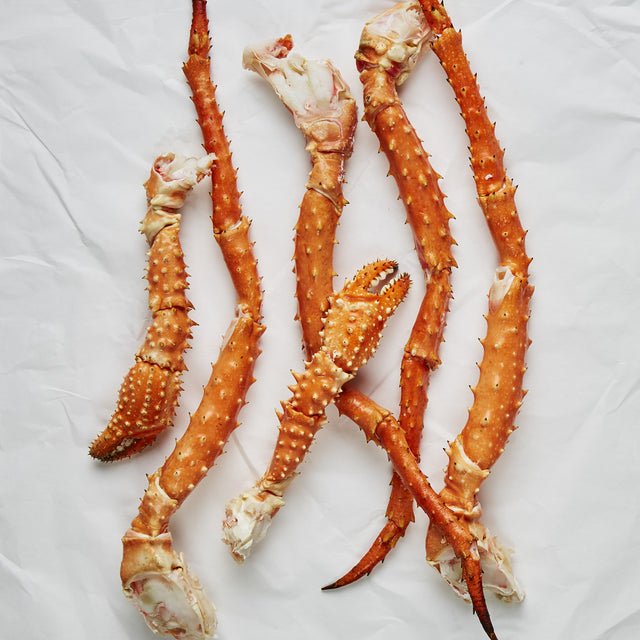Just imagine encountering a crab that has a leg span of up to six feet?
Well, if you've ever enjoyed the deliciously sweet and rich taste of an Alaskan king crab, then you already have. These cold-water giants are highly sought-after, with the red king crab being the true "king" of the Alaskan waters.
10 Alaskan King Crab Facts Worth Sharing

Interested to learn more about these interesting (and tasty) decapod crustaceans? We have you covered with these ten random facts.
1. There are over 100 species of king crab
The red king crab -- the most prized of them all
Although there are around 120 different king crab species, the Alaskan fishing industry focuses on three types. As discussed, when it comes to the Alaskan king crab, fisheries seek the blue, golden, and the red king crab -- the most prized of them all.
2. They're dedicated mothers
Although king crab mothers do not raise their young, they do carry thousands of embryos for approximately a year's time. In fact, the female king crab will lay anywhere between 45,000 and 500,000 eggs each year.
3. Hatched embryos begin their own journey
Once king crab embryos hatch, they become swimming larvae. After feeding on plankton for several months, they will settle to the ocean floor and become a non-swimmer. At this time, they look like a crab but are actually smaller than a dime.
4. They molt as they develop
Some of the largest red king crabs ever found were believed to be around 30 years old
Mainly made of calcium, a king crab's shell is its skeleton. During their first few years of life, king crabs molt their shell numerous times. Reaching sexual maturity at around the age of four or five, only adult females must later molt to reproduce. Some of the largest red king crabs ever found were believed to be around 30 years old, weighing in at a whopping 24 pounds.
5. Many species view the king crab as a vicious enemy
Alaskan king crabs are mainly carnivores, feeding on snails, worms, barnacles, mussels, clams, starfish, sand dollars, sea urchins, and even other crabs. However, their diets vary based on their age and the depth in which they reside.
6. We're not the only ones that enjoy an Alaskan king crab feast
Just because they prey on the above species does not mean that they do not have natural enemies themselves. Halibut, Pacific cod, octopuses, sea otters, and even other crabs all enjoy the taste of fresh king crab just as much as we do.
7. They're travelers
Outside of mating season, king crabs are solitary creatures. Amazingly, they can "walk" up to 100 miles during their yearly migration. Relying on their long legs, they travel up to one mile each day at depths of 90 to 300 feet.
8. Their blood is blue
Since the blood of crabs contains hemocyanin, a copper-containing pigment, once oxygenated, it turns blue. In comparison, human blood contains hemoglobin which is rich in iron instead of copper. It is the hemocyanin molecules that allow these crabs to function in cold, low-pressure environments.
9. They're related to the hermit crab
Surprisingly, the red king crab is closely related to the hermit crab in regards to its genetics. Similar to the hermit crab, king crabs showcase claws of varying sizes. The right claw is typically larger because it is used to crush its food, while the smaller claw tears food apart.
10. King crabs "stack up" against predators
King crabs tend to live and travel alone. However, they have been known to form what's known as pods. As they stand on top of one another, this stacking behavior is believed to be a natural defense mechanism. In some cases, these pods may include thousands of king crabs.
There you have it, ten interesting facts to increase your crab knowledge (and most likely your appetite). Have a craving? Check out these recipes to take your next king crab experience to the next level.
Sources
http://www.adfg.alaska.gov/index.cfm?adfg=redkingcrab.main
http://www.alaskasealife.org/aslc_resident_species/46
https://www.afsc.noaa.gov/Education/oceanlife/crabs/red_crab.htm






